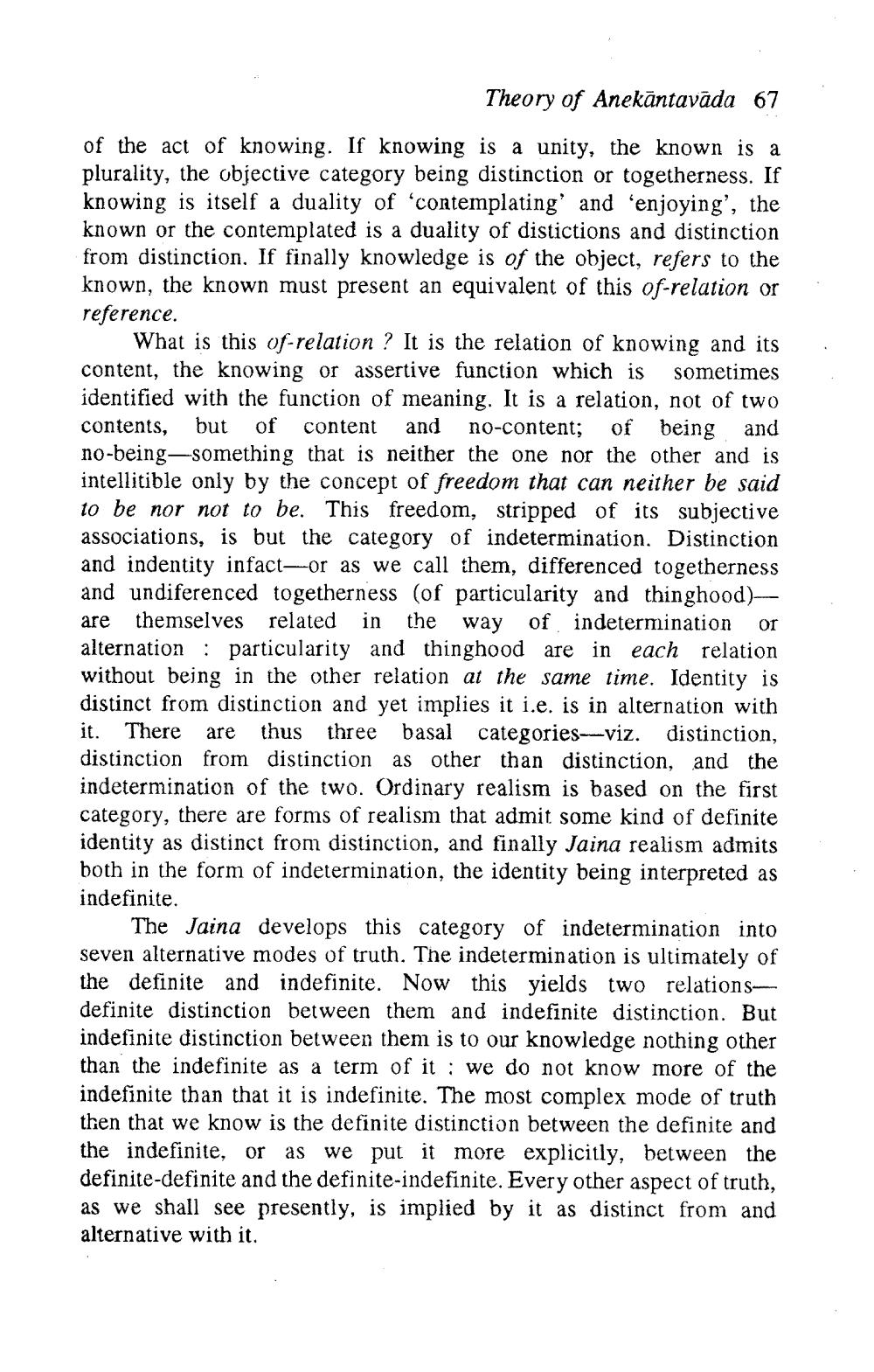________________
Theory of Anekāntavāda 67
of the act of knowing. If knowing is a unity, the known is a plurality, the objective category being distinction or togetherness. If knowing is itself a duality of contemplating' and 'enjoying', the known or the contemplated is a duality of distictions and distinction from distinction. If finally knowledge is of the object, refers to the known, the known must present an equivalent of this of-relation or reference.
What is this of-relation ? It is the relation of knowing and its content, the knowing or assertive function which is sometimes identified with the function of meaning. It is a relation, not of two contents, but of content and no-content; of being and no-being-something that is neither the one nor the other and is intellitible only by the concept of freedom that can neither be said to be nor not to be. This freedom, stripped of its subjective associations, is but the category of indetermination. Distinction and indentity infact-or as we call them, differenced togetherness and undiferenced togetherness (of particularity and thinghood)are themselves related in the way of indetermination or alternation : particularity and thinghood are in each relation without being in the other relation at the same time. Identity is distinct from distinction and yet implies it i.e. is in alternation with it. There are thus three basal categories--viz. distinction, distinction from distinction as other than distinction, and the indetermination of the two. Ordinary realism is based on the first category, there are forms of realism that admit some kind of definite identity as distinct from distinction, and finally Jaina realism admits both in the form of indetermination, the identity being interpreted as indefinite.
The Jaina develops this category of indetermination into seven alternative modes of truth. The indetermination is ultimately of the definite and indefinite. Now this yields two relations definite distinction between them and indefinite distinction. But indefinite distinction between them is to our knowledge nothing other than the indefinite as a term of it ; we do not know more of the indefinite than that it is indefinite. The most complex mode of truth then that we know is the definite distinction between the definite and the indefinite, or as we put it more explicitly, between the definite-definite and the definite-indefinite. Every other aspect of truth, as we shall see presently, is implied by it as distinct from and alternative with it.




